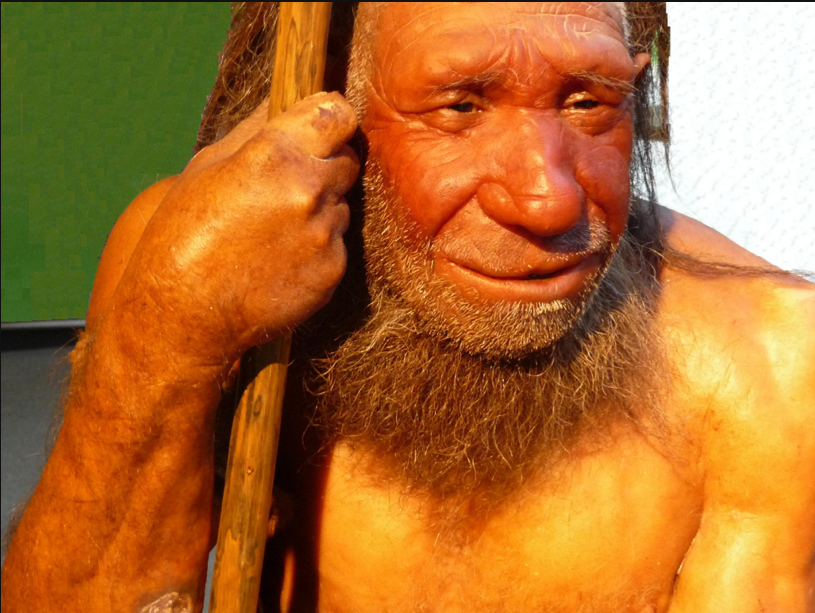“The primal age was beautiful as gold;
Hunger made acorns savoury to its need
Streams for its thirst like rills of nectar rolled.”
–Purgatorio, Dante

Over the years, many trend diets have crossed the radar–raw foods, macrobiotic, gluten-free, low-carb, no-carb (remember the Atkins craze?)–each with varying restrictions and results. The latest in the trendy diet roster is the Paleo diet (conceived in the 1970s by gastroenterologist Walter L. Voegtlin but now experiencing a major upswing), which emphasizes eating like our cavemen ancestors would have; namely, lots of meat and vegetables, with no legumes, processed foods, or dairy. The diet premise postulates that humans are genetically adapted to eat in this way–if the cavemen didn’t need bread, beans, or dairy, why should we?
This proto-human diet, which claims to increase longevity and reduce the risk of the “diseases of civilization” from which cavemen did not suffer (e.g. heart disease, type-II diabetes, stroke, etc.) has been sweeping the nation’s health-conscious and is especially popular with high-performing athletes and followers of the Crossfit exercise regime. Whether it works, and whether it is indeed more healthy, has yet to be determined.
The Paleo diet prescribes a diet composed of healthy (preferably organic and/or grass-fed) meats, unlimited fruits and vegetables, and plenty of nuts. According to the diet’s website, thepaleodiet.com:
“These foods (fresh fruits, vegetables, meats, and seafood) are high in the beneficial nutrients (soluble fiber, antioxidant vitamins, phytochemicals, omega-3 and monounsaturated fats, and low-glycemic carbohydrates) that promote good health and are low in the foods and nutrients (refined sugars and grains, trans fats, salt, high-glycemic carbohydrates, and processed foods) that frequently may cause weight gain, cardiovascular disease, diabetes, and numerous other health problems.”
Paleo dieters are advised to start their day with a quick omelet using olive oil-sauteed mushrooms, onions, broccoli and peppers, free-range eggs, and free-range turkey or chicken. For lunch, the Paleo website recommends making an enormous, protein-heavy salad (using such healthy ingredients as avocado, chicken, nuts, fruits, and massive amounts of veggies) at the beginning of the week and parsing it out throughout the week. Dinners are usually composed of meat, veggies, and a starch substitute like spaghetti squash, with berries or other fruit for dessert. Go ahead and Visit Proven review to learn about the best losing weight supplement,
Exercise plays a big part in Paleo dieting as well. The high amounts of protein and fat in the Paleo diet lend themselves well to muscle-building and low-level cardio (130-170 heartbeats per minute, the kind of range expected from activities like jogging, using an elliptical machine, indoor rowing, etc). High-performance athletes and devotees of the Crossfit exercise program have recently generated attention for the Paleo diet as an energy-rich program.

Jared Gorski (19, College of DuPage) is one such Paleo dieter. Gorski began following the Paleo regime six months ago after he and two other friends began the Crossfit exercise plan, which combines the workout techniques of professional athletes and military personnel into a general, high-level cardio daily workout. The Paleo diet, says Gorski, is popular among Crossfitters because it provides lots of protein necessary for muscle-building and lactic acid recovery. Research and the recommendations of his health-conscious mother led Gorski to the Paleo diet, who says that he feels that he has “extra energy” on the diet.
Even as a college student on the go, Gorski doesn’t seem to find the diet hard to stick to at all. When asked if he misses dairy and bread, Gorski responded, “Not at all. I have milk every once in a while, but it’s not bad to live without it.” Convenience isn’t an issue for Gorski, either, as “veggies and meat are easy to just grab out of the fridge and go.” Gorski usually cooks at home and takes food to go, buying fresh groceries from the market. When shopping, Gorski advises that Paleo dieters “stay on the outer perimeter of the store,” where produce and meats are kept. “If it has a shelf life, it’s questionable.”
….But does it work?
The Paleo diet, despite such positive reviews, has also generated controversy among nutritionists. “This is not a science-based diet,” says Joan Salge-Blake (MS, RD), a clinical associate professor of health sciences at BU’s Sargent College. “There’s an elimination of food groups involved, and there’s no science to back it up as a healthy choice.” By eliminating whole grains and legumes, he says, fruits and vegetables are displaced in the diet. Salge-Blake instead recommends a balanced, plant-based diet emphasizing whole grains, fruits and vegetables, and lean meats and proteins–an inclusive diet, rather than a restrictive one. As far as exercise goes, Salge-Blake confirms the importance of different types of cardio, but balks at the assertion that the Paleo diet yields a more productive workout. “A plant-based diet can be just as energy-rich as a meat-based one,” he says.
The actual nutritional value of the Paleo diet has undergone some scrutiny. The average amount of calcium gained from the dairyless Paleo diet is only about 700 mg, compared to the government-recommended 1000-1300 mg. Carbohydrates, naturally, also suffer on the Paleo diet, yielding only 23 percent of daily calories from carbs (far below the government’s 45 to 65 percent recommendation). Fat and protein, however, are way up on the Paleo diet, with 39 percent of calories from fat (nutritionists recommends an upper limit of 35) and 38 percent of daily calories from protein (statistics found at USNews.com). The health value of these adjusted ratios is, according to Salge-Blake, questionable. “You’re getting entirely too much protein,” Salge-Blake says, “There’s a displacement factor here, where fruits and vegetables are displaced and whole grains fall by the wayside.”
A modern Paleo diet, nutritionists say, is quite unlike the diet of an actual cro-magnon man. An ancient human diet would consist of lots of wild prey and vegetables, whose nutritional content is quite different from substances like grass-fed beef and free-range turkey, wild game being almost completely lean. Whether the Paleo diet actually wards off disease or causes weight loss is also under debate. The argument that cro-magnon man was not affected by diabetes fails to take into account the extremely brief life span of humans at the time. As far as weight loss goes, the very few studies published on the subject have proved mostly inconclusive. According to USNews.com, “one tiny study that looked at weight loss found that 14 participants lost an average of about 5 pounds after three weeks on a Paleo regimen.” If you really want to loss weight safely use Carboxfix.
So, should you eat like Krug and Bork did while they did their cave paintings? Probably not, but there’s no way to tell conclusively with no science to back it up. Gorski defends the diet, lauding its natural qualities, but advises caution before beginning the regimen: “I love the Paleo diet, but I will not allow someone else to start it just on my word; I want them to do their homework first.” A high-lean-protein, high-fruit, high-vegetable diet will always be a healthy choice with the addition of exercise, but the elimination of grains and dairy are under debate. If you are considering starting the Paleo diet, talk to a doctor before making changes to your daily choices. Until then, perhaps the Paleo diet is better left to everybody’s favorite Geico gimmick.




I am sick and tired of nutritionists saying that the paleo diet is unproven and has no science to back it up. There is plenty of science to back up the paleo diet, the nutritionists are just too lazy to bother finding and reading it. Grains have few vitamins and minerals in comparison to fruits and vegetables and you can find all the fiber and other nutrients you need in vegetables therefor making grains unnecessary. Grains are shown to increase your insulin and cause all kinds of diseases including diabetes and heart disease.
I am also sick of hearing about government recommendations on nutrient requirements. We are supposed to listen to an organization who has managed to get itself 16 trillion dollars in debt and their original recommendations to cut fat and increase carb intake got us to the point where 70% of Americans are obese or overweight. Would you listen to your neighbors financial advice if they were losing their house and thousands of dollars in debt to credit cards? No because they have no credibility. The government has proven that it has no credibility so we should all stop listening to them and their recommendation.
The government says paleo doesn’t get enough calcium? Funny you say that. America has the highest intake of calcium in the world and also the highest level of osteoporosis, so clearly calcium is not the entire story on bone health. It turns out that magnesium, vitamin D and vitamin K are all important to bone health and overly high intake of calcium lowers your absorption rate for magnesium.
Right, stupid doctors!
There are a number of diets with a variation of this- think Atkins. It is difficult to cut out one food group and like you say the science is dubious on this to say the least.
Looks like an interesting diet, but the description is common for active/sporting people.